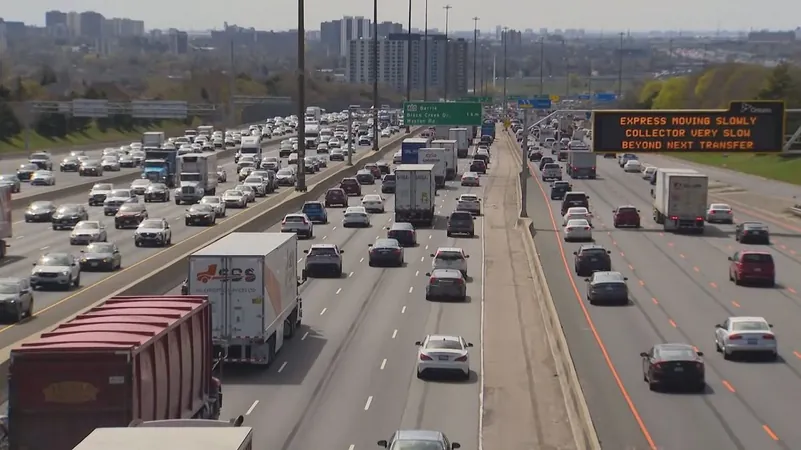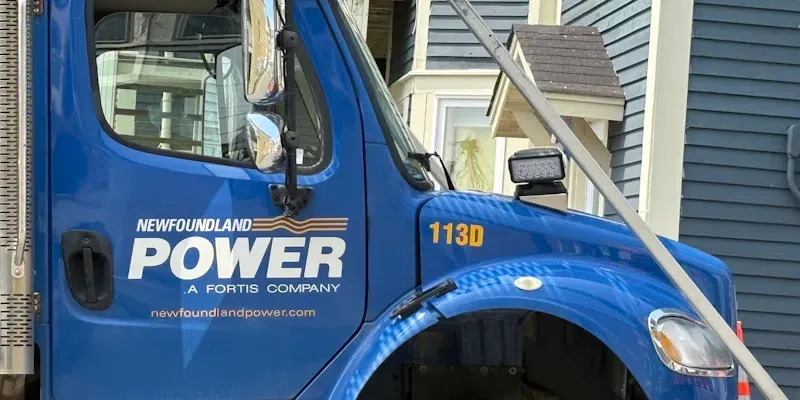
Doug Ford's Ambitious Highway 401 Tunnel Proposal: Can It Escape the Shadows of the 'Big Dig'?
2024-09-26
Author: Jacob
Overview
As Ontario Premier Doug Ford ramped up discussions around the proposed construction of a tunnel beneath Highway 401, it has become clear that while the ambition is there, the journey ahead is filled with uncertainty. Ford confirmed his administration's commitment to a feasibility study aimed at enhancing highway capacity between Mississauga and Scarborough—an area plagued by severe traffic congestion despite portions of the highway being as wide as 20 lanes.
Current State of Highway 401
Highway 401 stretches nearly 50 kilometers within Toronto, from Highway 427 to Rouge Urban National Park. The current gridlock is a daily frustration for commuters, prompting Ford's consideration of a tunnel solution, which he presented alongside his transportation and infrastructure ministers. Preliminary assessments, including soil boring and environmental evaluations, are set to inform the feasibility study, exploring "various options" for capacity expansion. Ford hinted at the incorporation of transit elements in this project—a necessity as Ontario's population continues to swell.
Concerns and Challenges
Nevertheless, serious concerns loom regarding project costs, timelines, and routing, with Ford withholding specific details pending the completion of the study. With speculation surrounding potential early elections, residents' frustrations about traffic are growing louder. "Help is on its way," he affirmed, evoking the ire of those frustrated with the current state of affairs, while reflecting on past administrations' failures to prioritize similar infrastructure needs.
Competing Projects
Ford's plans include completing the expansion of Highway 401, a commitment that will vie for resources against other significant road and transit projects—many of which the government has already budgeted tens of billions of dollars for. The push for this expansion is further justified by the continued population growth in the Greater Toronto Area, and while some responses appear decisive, the feasibility study aims to provide clarity on project specifics.
Potential Impact of the Tunnel
If realized, the Highway 401 tunnel could become one of the world's largest highway infrastructure undertakings. Its comparison to previous significant tunnel projects highlights both potential benefits and pitfalls. From 2017 to 2021, Metrolinx created two 180-meter tunnels below Highways 401 and 409 as part of an expansion of the GO Transit service, costing approximately $116.9 million. In contrast, the George Massey Tunnel replacement project in Vancouver is projected to run $4.15 billion, serving as a reminder of the complexities and financial implications embedded in such large-scale ventures.
Lessons from the 'Big Dig'
Reflecting on the challenges of substantial infrastructure projects, Ford compared the proposed Highway 401 tunnel to Boston's infamous 'Big Dig'—one of the most controversial undertakings in American history. The 'Big Dig' involved relocating Interstate 93 underground, transforming an elevated highway into a multi-lane tunnel and expressway, but not without extensive cost overruns and logistical nightmares. Initial estimates valued the project's budget at around $2 billion, but it ultimately soared to approximately $15 billion upon completion in 2006.
Tunneling Expertise and Caution
Ford suggested strategies learned from the 'Big Dig' could be applied to the Highway 401 endeavor, citing the importance of continuous construction to streamline the process. He expressed confidence in Ontario's tunneling expertise, but caution is warranted given the many unforeseen challenges that could arise.
Expert Opinions
Experts like Virginia Greiman, a Boston University professor, have emphasized the complexities that can emerge during such monumental projects, including increased costs and lengthy delays despite diligent planning. Echoing those concerns, Ian Coss, a Boston-area journalist who chronicled the 'Big Dig,' pointed out the profound societal implications of such transformative infrastructure efforts, cautioning about the long lead times required to materialize significant changes.
Conclusion
As Doug Ford pushes forward with his plans for Highway 401, the critical conversation around infrastructure investment in Ontario intertwines with lessons from past experiences. Only time will tell if these ambitious proposals can be delivered without falling victim to the same pitfalls that have shadowed monumental construction endeavors in the past. One thing remains clear: the stakes are high, and the future of Ontario's transportation infrastructure hangs in the balance.









 Brasil (PT)
Brasil (PT)
 Canada (EN)
Canada (EN)
 Chile (ES)
Chile (ES)
 Česko (CS)
Česko (CS)
 대한민국 (KO)
대한민국 (KO)
 España (ES)
España (ES)
 France (FR)
France (FR)
 Hong Kong (EN)
Hong Kong (EN)
 Italia (IT)
Italia (IT)
 日本 (JA)
日本 (JA)
 Magyarország (HU)
Magyarország (HU)
 Norge (NO)
Norge (NO)
 Polska (PL)
Polska (PL)
 Schweiz (DE)
Schweiz (DE)
 Singapore (EN)
Singapore (EN)
 Sverige (SV)
Sverige (SV)
 Suomi (FI)
Suomi (FI)
 Türkiye (TR)
Türkiye (TR)
 الإمارات العربية المتحدة (AR)
الإمارات العربية المتحدة (AR)